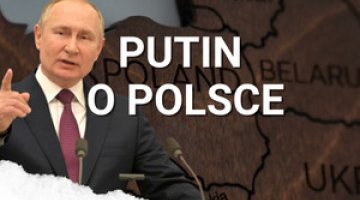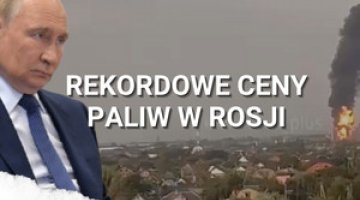Russia shows off its new weapons
The military parade commemorating the 70th anniversary of the Soviet Union signing the German capitulation act on 9 May was an opportunity for Russia to present the new weapons for the Russian Ground Forces for the first time since the collapse of the USSR. These included tanks and armoured fighting vehicles on three platforms which have been designed and constructed over the past few years: heavy Armata, medium Kurganets-25 and light Bumerang, and also a Koalitsiya-SV self-propelled howitzer. Cutting-edge and sometimes even innovative construction solutions have been used in the new weapons. Those applied in T-14 (on the Armata platform) allow it to be classified as the first new-generation tank built since the end of the Cold War, and it is at present the world’s most modern combat vehicle in this category. It also serves as a symbol of Russia relinquishing the approach in which soldiers are treated only as cannon fodder. The other weapons presented did not display new quality, and only proved that Russia can match the global leaders. The parade, which was intended as a demonstration of power of a modernising Russian army – considering the propaganda rank given to it –may be said to have ended in an embarrassing way. The problems with the T-14 tank revealed during the preparations provided grounds to discredit Russia’s capabilities as a manufacturer of modern military equipment.
The Moscow military parade as a venue for the public presentation of new weapons
The ‘Victory Parade’ held annually in Moscow in Soviet times was used as a regular opportunity to present new weapons. Technical novelties were demonstrated on the occasion of all major anniversaries, the last time being in 1990 (the BMP-3 infantry fighting vehicle was demonstrated then). This tradition was resumed only two decades later (the S-400 missile system was presented in 2010, and the Sukhoi T-50 fifth generation prototype multi-role combat aircraft was presented in 2014). New weapons for the Ground Forces were demonstrated during the Moscow parade this year for the first time in 25 years. Unlike in the Soviet times, when weapons which the Armed Forces already had were shown in public, those presented now either are prototypes(such as the T-14 tank or the 2S35 self-propelled howitzer), or represent small so-called pre-production batches prepared for military tests (for comparison, BMP-3 was demonstrated in public three years after it had been introduced into operation).
The military-technical aspect
The T-14 tank has sparked the greatest interest among observers from the start (the media often erroneously call it Armata, which is the name of the platform on which it was built). This is the world’s first main battle tank (MBT) to have been constructed as a vehicle with the crew located in an armoured capsule in the front part of the vehicle (this solution will allow the crew to survive if the tank is destroyed). Another innovative solution is the unmanned tower with the newly constructed 125 mm 2A82 cannon. The T-14 is not yet fully complete – the A-85-3 engine to be used in the final version is still being tested (due to this the tank’s mass production has been delayed and will not begin this year contrary to previous promises).
An innovative construction was also used in the 152 mm 2S35 Koalitsiya-SV self-propelled howitzer. It is the first one to have an unmanned tower with the newly constructed 2A88 canon. However, the chassis used in it (from the T-72 family) makes it look like a previous-generation vehicle. Ultimately, Koalitsiya-SV will be built on Armata platform (the use of the older chassis made it possible to present the howitzers during the parade). Regardless of this, its revealed firing range (40 km) makes it equal to analogous equipment being introduced in Western armies.
The other fighting vehicles presented (besides the ones mentioned above) are prototypes where new construction solutions above all allow Russia to close the gap on the West’s technological level. Innovative solutions can only be found in the construction of the heavy infantry fighting vehicle (HIFV) based on the Armata platform marked as Object 149. However, it does not bring any new quality in conceptual terms (it is similar to Israel’s HIFV Namer). Object 693, which is a tracked armoured personnel carrier, and the infantry fighting vehicle marked as Object 695 cannot be defined as innovative constructions. They are similar to China’s ZBD-97, which was constructed by Russian engineers. However, they can still be treated as a Russian challenge to American engineers who are currently working on an analogous platform (GCV as part of the DARPA project). The wheeled armoured personnel carrier Bumerang was clearly inspired by Western constructions: on the outside it is similar to a hybrid of Finland’s Patria AMV (Polish Rosomak) and France’s VBCI. Tests of new Western European armoured personnel carriers were conducted on Russian testing grounds in the past few years and this has played a major role in this case.
The information-propaganda aspect
The Russian government has attached great significance to the presentation of the new weapons as a propaganda instrument, for example by giving a great deal of publicity to preparations for the parade. Given the fact that the demonstrated fighting vehicles are still in an early phase of implementation, this was a risky move. A failure of one T-14 tank during the final rehearsal for the parade gave grounds to doubt the quality of the new construction, and thus to discredit the capabilities of Russia as a manufacturer of modern weapons. This was evidently ridiculed in the media (especially in Ukraine), and Russian commentators were unable to respond adequately (for example, they tried to convince the public that this was an intentional failure). Possible technical problems during the military parade posed the risk that the entire event could end up being a disgrace. On the other hand, the unfavourable comments were based on untrue information, and their authors hoped that the audience did not have adequate specialist knowledge to verify them or they lacked this knowledge themselves. It could be noticed during the rehearsals preceding the parade that covers made of steel sheet or alloy protecting elements of the tank’s equipment (mainly the fire control system and active defence system) formed a great part of the tower’s surface in the T-14 tank. Some observers believed that these covers formed the armour of the tank’s tower, suggesting that dummies instead of real fighting vehicles had been prepared for the parade.
Possible developments
When the new types of fighting vehicles presented during the parade are accepted and introduced into operation in military units, Russia will above all be able to reduce the West’s technological advantage. The T-14 tank is the only case where it can be said that Russia has entered into a new phase of rivalry in the area of the development of armoured weapons, and thus has resumed the arms race in Cold War terms, after a break which lasted almost four decades.
Given the level of the technological advancement of the presented constructions, and the need for Russia to develop solutions that will replace the previous import of military components and technologies from the West, it should not be expected that the new fighting vehicles will be introduced into operation any time soon. Furthermore, they will be supplied in smaller quantities than the constructions which are currently produced. According to information revealed so far, the T-14 tank will be the first to be put into operation: the first of the 100 tanks from the experimental series will be introduced as early as in 2016 (the Russian army has received 24 T-14 tanks so far). Mass production of the new Koalitsiya-SV howitzer (eight machines have been supplied for military tests so far) and armoured fighting vehicles based on Kurganets-25 and Bumerang platforms is expected to start in 2019. If the present tempo of work is maintained, the Russian Ground Forces will realistically be equipped with the new types of weapons between 2020 and 2025.





